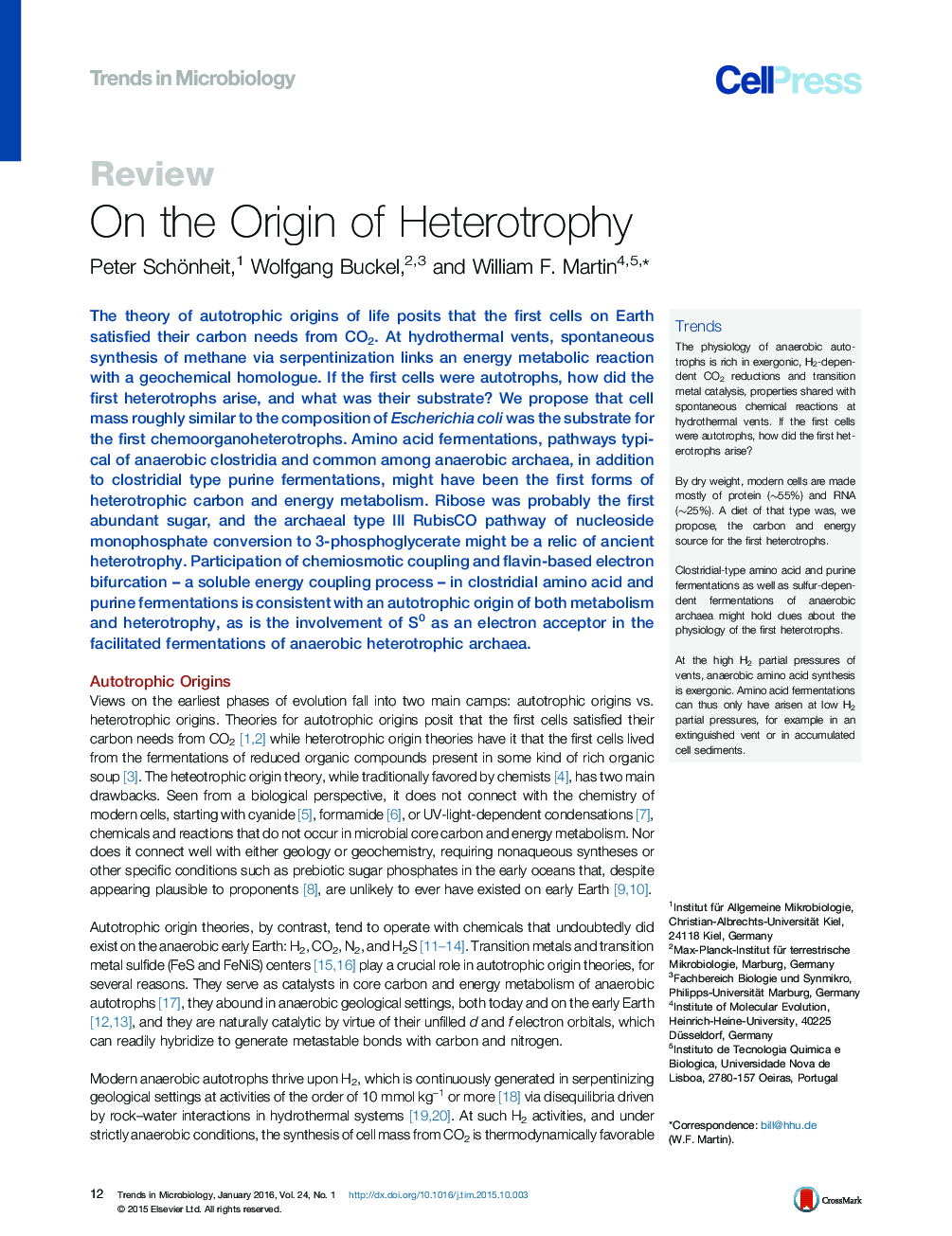| کد مقاله | کد نشریه | سال انتشار | مقاله انگلیسی | نسخه تمام متن |
|---|---|---|---|---|
| 3421949 | 1226701 | 2016 | 14 صفحه PDF | دانلود رایگان |

The theory of autotrophic origins of life posits that the first cells on Earth satisfied their carbon needs from CO2. At hydrothermal vents, spontaneous synthesis of methane via serpentinization links an energy metabolic reaction with a geochemical homologue. If the first cells were autotrophs, how did the first heterotrophs arise, and what was their substrate? We propose that cell mass roughly similar to the composition of Escherichia coli was the substrate for the first chemoorganoheterotrophs. Amino acid fermentations, pathways typical of anaerobic clostridia and common among anaerobic archaea, in addition to clostridial type purine fermentations, might have been the first forms of heterotrophic carbon and energy metabolism. Ribose was probably the first abundant sugar, and the archaeal type III RubisCO pathway of nucleoside monophosphate conversion to 3-phosphoglycerate might be a relic of ancient heterotrophy. Participation of chemiosmotic coupling and flavin-based electron bifurcation – a soluble energy coupling process – in clostridial amino acid and purine fermentations is consistent with an autotrophic origin of both metabolism and heterotrophy, as is the involvement of S0 as an electron acceptor in the facilitated fermentations of anaerobic heterotrophic archaea.
TrendsThe physiology of anaerobic autotrophs is rich in exergonic, H2-dependent CO2 reductions and transition metal catalysis, properties shared with spontaneous chemical reactions at hydrothermal vents. If the first cells were autotrophs, how did the first heterotrophs arise?By dry weight, modern cells are made mostly of protein (∼55%) and RNA (∼25%). A diet of that type was, we propose, the carbon and energy source for the first heterotrophs.Clostridial-type amino acid and purine fermentations as well as sulfur-dependent fermentations of anaerobic archaea might hold clues about the physiology of the first heterotrophs.At the high H2 partial pressures of vents, anaerobic amino acid synthesis is exergonic. Amino acid fermentations can thus only have arisen at low H2 partial pressures, for example in an extinguished vent or in accumulated cell sediments.
Journal: - Volume 24, Issue 1, January 2016, Pages 12–25